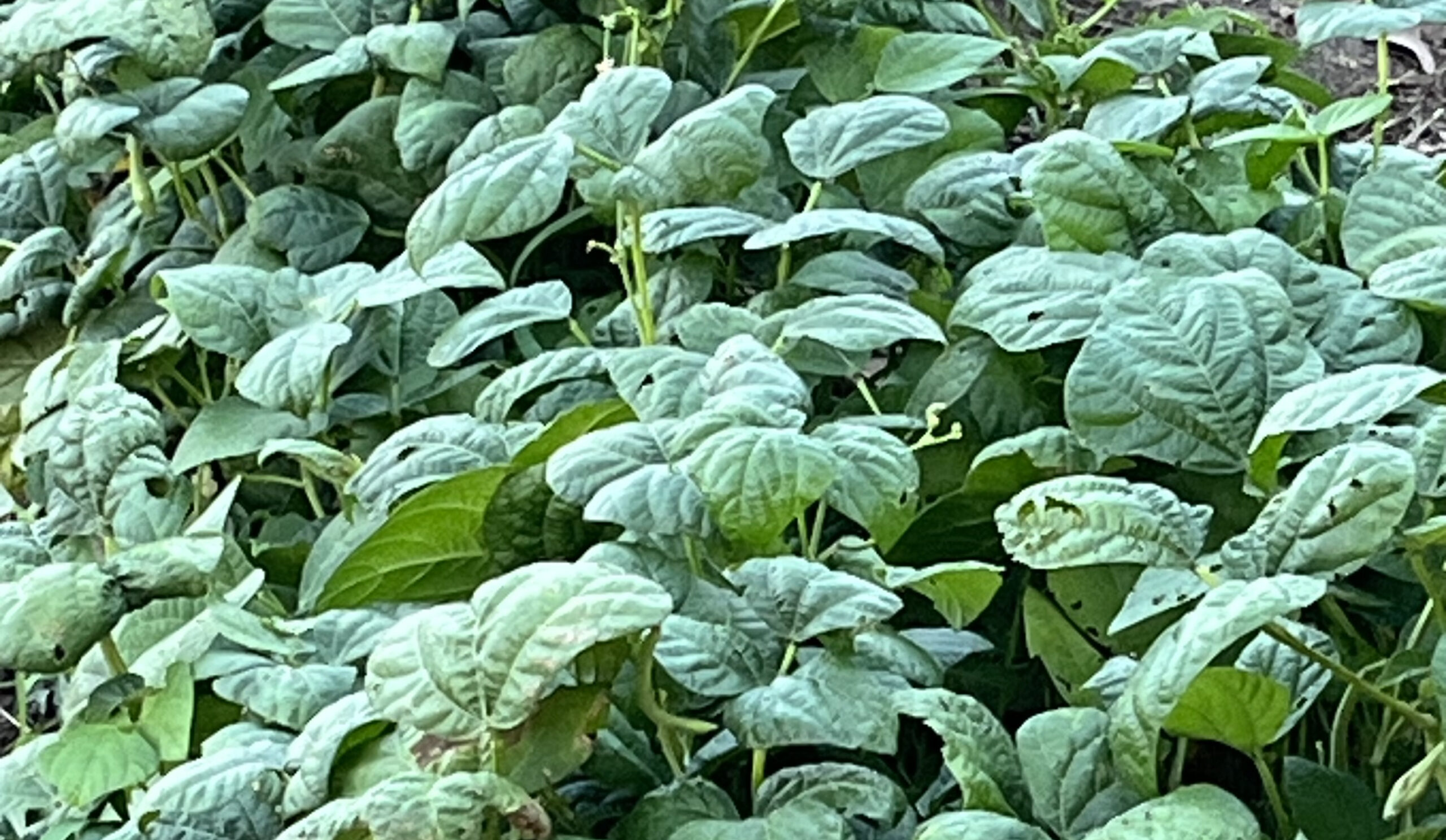The Hort Report: Dealing with cucumber bugs and squash bugs, and when to pick your green beans

It seems like that the days of late June and most of July have been some of the hottest and driest we have had in many years. The heat has been very hard on almost everything. Hopefully you have been writing down everything that you have been doing to help your plants survive the hot weather.
I also hope many of you were able to get some much-needed rain in the past week. We need more rain in the coming days and weeks too.
I provided tips in the last Hort Report on how to get the most out of your watering. Those tips should come in handy for the rest of the summer.
Beside some of the plants not surviving, we are being overrun with other problems. One is all the insects that appear to be attacking our vegetables and flowers.
I’ve talked about how to fight Japanese Beetles in the past, and hopefully many of you kept them under control this year. I’m still checking my traps daily, going out every morning and picking bugs off grapes and green bean plants. I haven’t seen any in the past few days, so I think it is over for this year — at least for Laura and I at our house.
Several people have contacted me about why their vining vegetables are dying. Two main insects are attacking these types of vegetables — the cucumber beetle and the squash bug. Both can kill off your vining vegetables.
The cucumber beetle attacks the base of the plant and injects a virus into the plant that causes it to dry up and die. The virus is spread from one plant to another by the cucumber beetle. The cucumber beetle keeps the virus inside itself over the winter, but we can talk about this later. Once you see the cucumber beetle, either the spotted or striped ones, try to kill them — even now.
The squash bug eats away at the vining vegetables by eating the leaves and sucking the sap from the vegetable plants. The squash bug also releases bacteria into the vegetable plants while feeding, causing more damage.
If you can find and destroy the squash bugs, you can sometime save your vining vegetable plants. You need to scout out and find the squash bug eggs on the underside of the leaves of your vining vegetable plants. Finding and destroying the eggs help break the life cycle of the squash bug.
When you find either cucumber beetles or squash bugs, kill them. You can hand pick them, which most the time is almost impossible. I don’t like using insecticides, but sometimes you need too. Use one that is safe. Several are OK to use. Some of them are organic too.
One type of powder to use on all vining vegetables that is safe and works is Diatomaceous Earth, which is made from ground fresh water. You put the powder on the plants. The insects eat the powder, and the sharpness of the powder will cause the insect to bleed internally. You can use this powder anytime during the life of the vining vegetable plants.
Remove any and all parts of your vining vegetables that are dead or dying. These parts of the vegetable plant many times still carry the virus, bacteria and diseases that killed the vegetable plant. Don’t put these vegetable parts in a compost pile. You need to destroy them. Most the time, I will burn them. Sometimes I put them in the trash. Just make sure they can’t get back to your garden soil or vining vegetable plants.
Some people in the last few days have asked me about when green beans should be picked. First, realize that in a perfect world, all the green beans would be ready to pick at the same time. If you want to get the most out of your green bean crop, pick when the bean is ready instead of picking over or under ripe green beans at the same time.
When I was a young boy, my grandmother Jessie May would have one of the hired hands or some grandkids start to pick green beans. We would start after cleaning the horse barn at about 9 a.m. just after the dew was off. The problem was most of us would pick every green bean we saw, not realizing some were not ready or perhaps even over ripe.
Jessie May would let us know once we got to snapping them which ones were ready and which ones weren’t. Seems like I somehow forgot this by the next time we picked green beans.
When you are picking green beans, they need to have good size and be firm to the touch. Most will be around the size of a pencil. Snap the green bean or cut it off from the stem of the plant. Ripe green beans should snap easily off the stem.
If green beans are small and not fully ripened, just leave them. Come back in a few days once they have grown more and pick them.
If you can see the bean inside the skin bulging and showing, the green bean is too ripe. It will taste tough. Sometimes I will shell the bean out of the skin. This allows it to good ahead and cook.
When picking them, don’t tear the plant while picking them. Most green beans will continue to produce more green beans as the growing season as on. If the green bean plant is damaged, it may not produce anymore and die, so be careful.
If you follow these rules when picking your green beans, plan to pick them more often. By being more selective when picking them, you should have more ripe beans each time you pick. Some of you won’t want to do this. I know I don’t like getting down on my hands and knees or sit on a bucket to pick green beans.
That is why we grow pole green beans and bush green beans in tubs. Laura and I have learned to pick green beans standing up. Only bending down to pick the lower-hanging beans from the pole green beans is much easier and handy.
I appreciate all your questions in the past and look forward to them in the coming days. If you have any questions, please call me at 573-588-2040 at Shelby County Implement in Shelbina, Mo. Better yet, come out and see me. Stop and ask me anytime you see me. I really enjoy meeting people and visiting about horticulture questions and concerns. You can also email me with your questions and pictures at sci63468@hotmail.com.
Enjoy the much-needed rain we have received the past few days. Remember to thank God for us receiving the rain.

Pat Greenwell is the owner of Shelby County Implement in Shelbina, Mo. He was a high school agriculture teacher for 11 years. He has taught adult vocational agriculture since 1987. He also is a research assistant at the Truman State University Ag Department Farm.
Miss Clipping Out Stories to Save for Later?
Click the Purchase Story button below to order a print of this story. We will print it for you on matte photo paper to keep forever.

